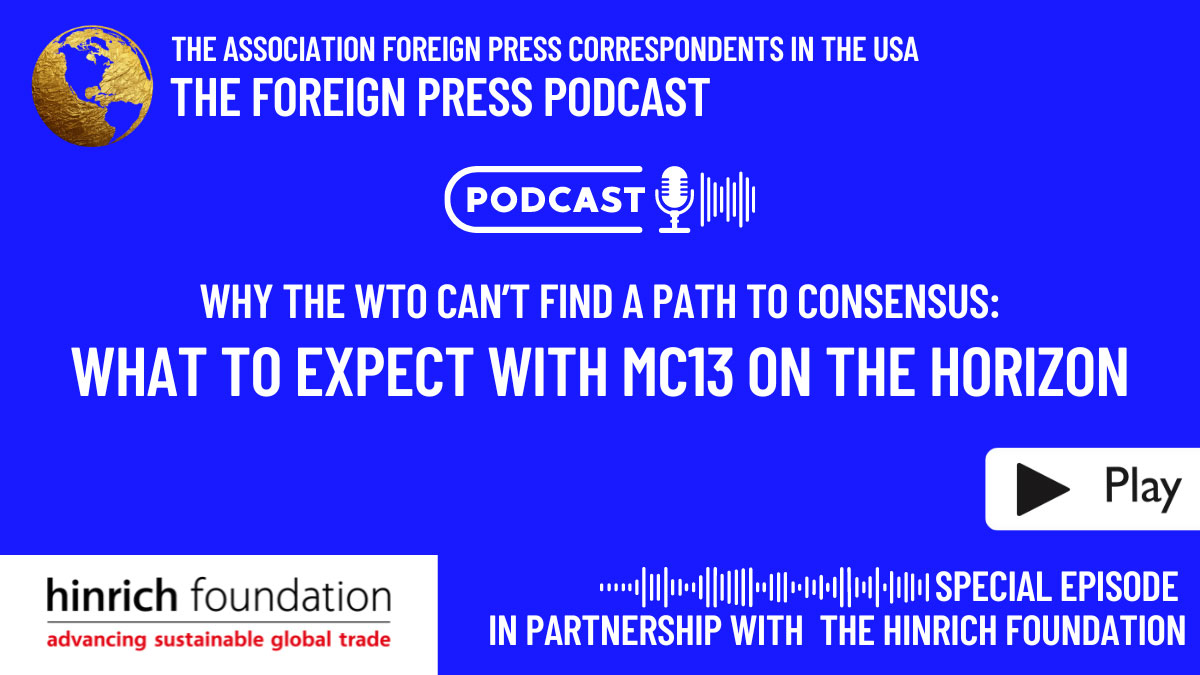Current Accounts: The Hinrich Foundation Trade Podcast
Why the WTO can't find a path to consensus
Published 20 February 2024
In this special edition of Current Accounts, the Hinrich Foundation’s podcast on global trade, the Association of Foreign Press Correspondents in the United States interviews Deborah Elms on the complexities of decision-making in the WTO.
Tune in to the special episode hosted by the Association of Foreign Press Correspondents in the United States here:
Getting 166 diverse staff to agree on a single lunch order without a boss is a difficult exercise. This is, roughly, an analogy to the situation facing the WTO. Consensus-based decision making has become increasingly strenuous as membership grows and the agenda for managing global trade expands.
Over the years, the WTO and its predecessor the General Agreement on Tariffs and Trade have tried to provide alternative pathways to getting to yes. Key among these are agreements between smaller subsets of members before they are offered organization wide. While recent experiences with the Joint Statement Initiatives puts forward some reason for optimism, the broadening scope of challenges facing the trade policy landscape is poised to underscore more questions than answers for the future of the multilateral trading system.
Tune in to this special episode of Current Accounts, based on our policy brief titled "The challenge of getting to yes at the WTO" authored by Hinrich Foundation Head of Trade policy Deborah Elms.
Here is an excerpt from their conversation:
|
Alan Herrera: |
You particularly mentioned that preferential trade agreements are noted as "safety valves" for tough topics. So how have these arrangements evolved in scope, in depth, and what role do they play in shaping international trade rules, especially in areas like the digital and the green economy? |
|
Deborah Elms: |
One of the early efforts in the, what used to be the GATT and is now the WTO, was to try to manage trade through the organization. So we had global rules for global outcomes, but from the very beginning, there was a loophole that had to be built in to deal with the European Union or what became the European Union as it evolved. So there is a loophole in the WTO that allows you to create smaller arrangements at the regional or even bilateral level that are supposed to include substantially all trade. It’s never been tested. We don’t know exactly what that means, but that relatively modest sounding loophole has turned out to be a big challenge for the trading system because increasingly governments have turned to plurilateral or regional or bilateral arrangements outside of the WTO to get what they’re looking for. |
Tune into the Hinrich Foundation’s podcast series for insights on international trade.
© The Hinrich Foundation. See our website Terms and conditions for our copyright and reprint policy. All statements of fact and the views, conclusions and recommendations expressed in this publication are the sole responsibility of the author(s).



